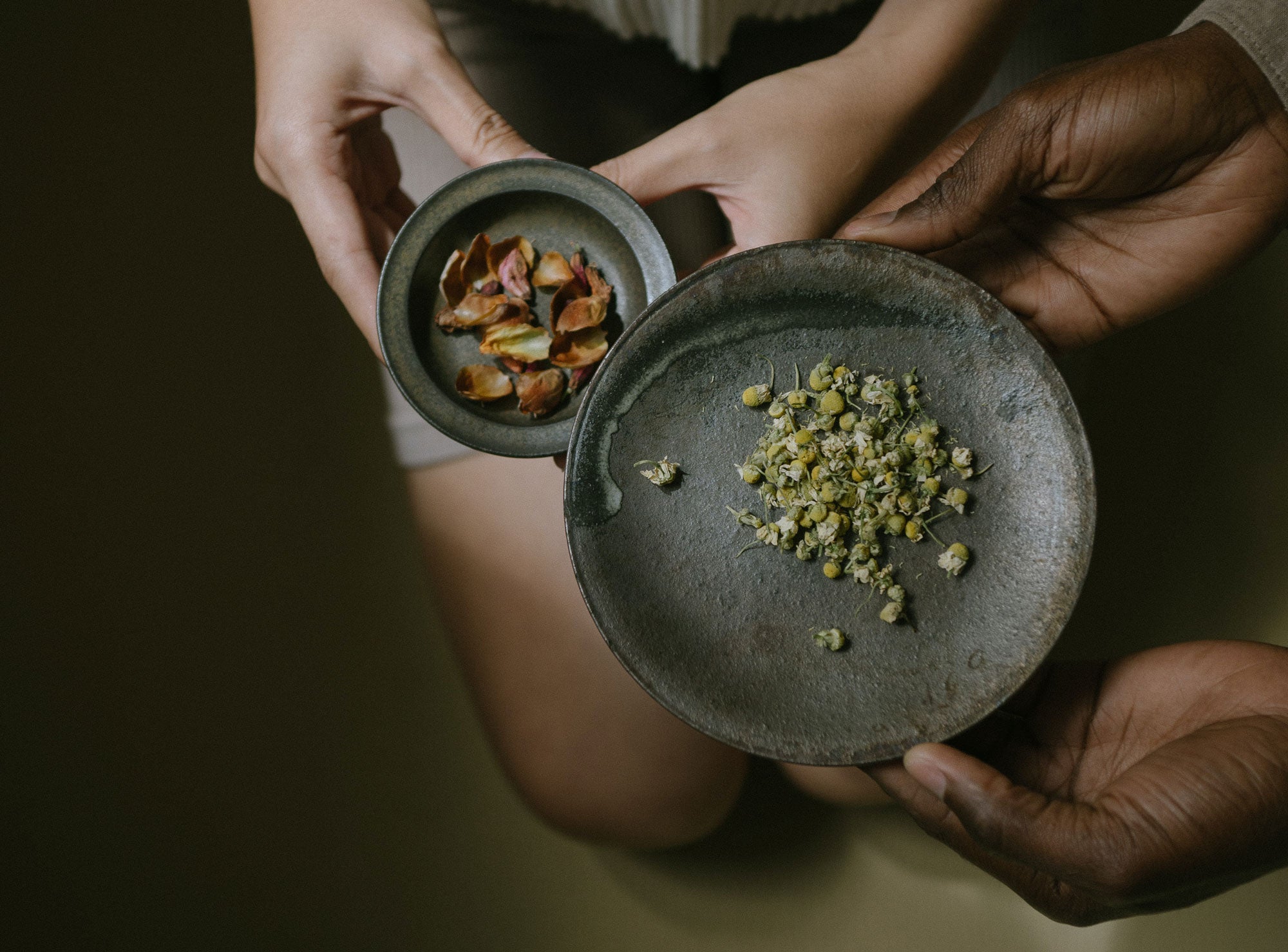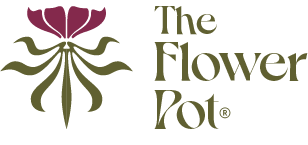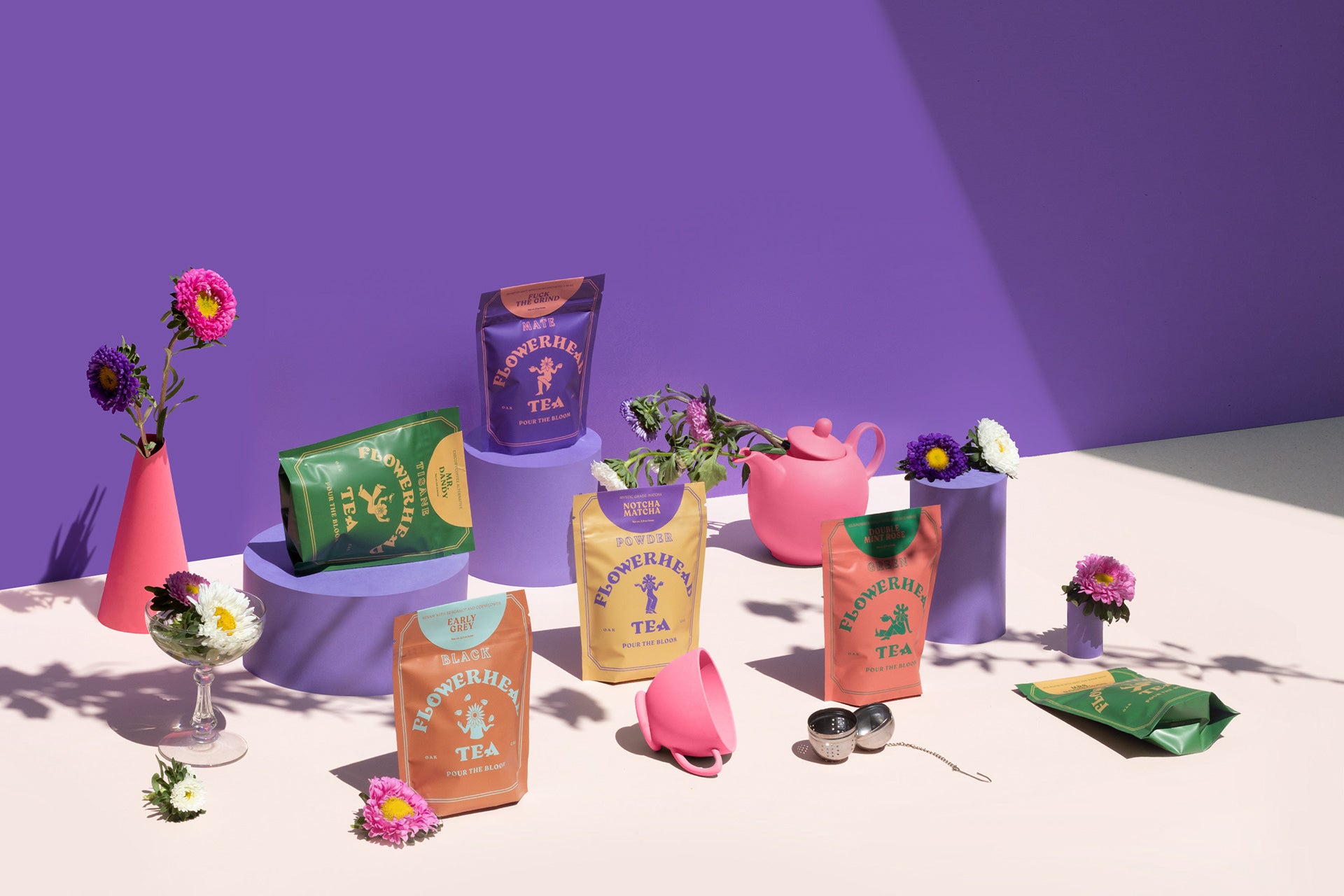
A Guide to Traditional Chinese Medicine in Modern Times
Exploring Origins, Theories, and Remedies with TFP + Mount Sunny
Traditional Chinese medicine (TCM) is one of the world’s oldest systems of medicine. Based on a comprehensive philosophy of life, TCM cultivates a balance between the mind and body, the individual and society, and humanity and nature.
We spoke to Dr. Shelby Ramirez, DACM, MSOM, L.Ac, co-founder and head acupuncturist/herbalist at Mount Sunny. An acupuncture and wellness studio based in Phoenix, Arizona, Mount Sunny brings the wisdom and healing power of the ancient medicinal system to the modern world.
Origins of Traditional Chinese Medicine

The earliest known record of Chinese medicine is the Huangdi Neijing, written by Chinese emperor Huangdi around 2600 B.C. The ancient treatise on health has been the foundation of Chinese medicine for more than two millennia.
Also known as the Neijing, it contains two medical texts: the Suwen (素問; Basic Questions) and the Lingshu (靈樞; Spiritual Pivot). The first book covers theory and diagnosis, and the second focuses on acupuncture treatment and practice. Structured in a question-and-answer format, it’s a conversation between the mythical Yellow Emperor and his six ministers.
The Neijing indicated illness was a natural effect of aging, diet, lifestyle, environment, and emotions. It replaced the shaman’s approach to disease, which centered the practice of healing around the removal of demonic influences.
Differences Between Chinese Medicine and Western Medicine
Centuries-old religions and philosophies from ancient China shaped medicinal philosophy, which is sometimes misunderstood in the Western world. TCM is traditionally used as a preventative medicine, though people often reach for it as a last-ditch effort when nothing else works, Ramirez said.
“Western medicine always treats the cold, Chinese medicine treats the whole person,” she explained. “With Chinese medicine, you're always looking at patterns and constitutions.” “Everybody has their pattern; that's where disease arises.”
Though Chinese medicine practitioners look for the pattern of the imbalance, called the root cause, they also treat the branch or symptom. “The branch is the consequence of the pattern. Western medicine is constantly treating the branch,” she adds.
“Within Western medicine, there's a new syndrome, a new symptom, and a new term,” Ramirez said. “Even with COVID, we’ll use the same protocol we used two thousand years ago.”
Theory of Traditional Chinese Medicine
The universe is made up of laws and forces—yin and yang, Qi, and the five elements—which apply to humans equally as in nature. Chinese medicinal theory is the ability to understand someone’s disease, sickness, or illness, by observing nature.
The range and array of aspects, the systems, emotions, and organs in the body, are intertwined with nature. Whether physical, mental, emotional, or spiritual, all life can be broken down into yin and yang; one cannot exist without the other.
‘’Is it yin or yang? Light or dark? Hot or cold?” Ramirez said. Within those, it's all relative, based on what you're comparing it to. “You can endlessly spiral from there, which creates the union symbol.”
Known as the third aspect, the yin-yang, Tai Chi, or Taiji, the goal of optimal health is achieving that balance of yin and yang at equal parts. “The whole philosophy is based on balance, everything comes back to it.”
Herbal remedies, acupuncture, massage, hydrotherapy, exercise (such as Tai Chi), and nutrition therapy are all used to create an equilibrium of yin-yang and Qi in the body.
“It's observing how nature interacts with itself, how things naturally happen, reflecting what goes on internally in the body and how to treat it,” Ramirez explained.
Qi is your life force (vital breath) that flows from the organs to the tissues to the cells, nerves, and even consciousness. Acupuncture balances Qi by inserting thin, painless needles into specific meridians, or pathways connecting networks in the body.
In the five-element theory, the most recognizable are wind, water, Earth, and fire. The fifth is metal. “Each of those elements represents different aspects of the body, different seasons within the weather,” Ramirez said.
“Chinese medicine is the study of what's going on externally to understand how our body responds—it’s the macrocosm of the universe on a microcosm scale.”
Herbal Remedies & Acupuncture Treatment
The five branches of TCM care include herbal medicine, acupuncture therapy, food therapy, movement, and manual therapy.
“Herbs are something you can take daily to maintain balance, whereas acupuncture is a little more direct on the physical body,” Ramirez said.
In TCM, however, herbs are often paired with acupuncture. That’s because acupuncture and herbal medicine are complementary, Ramirez said both branches work together to restore balance in the body.
Eastern medicinal remedies, whether herbs for depression or antiviral herbs, often come in capsules or as powders. Though traditional Chinese herbs may only be found at a special herb store, the focus is on finding the root cause of a problem, creating custom formulas, and offering longer-term supplemental treatments.
An essential branch of Chinese medicine, herbs are used in China to treat the flu, menstrual pain, irregular menstruation, sexual dysfunction, infertility, menopause, insomnia, hepatitis, cirrhosis, and even some cancers.
Chinese acupuncture is most commonly used to treat headaches, chronic pain, stress, anxiety, arthritis, digestive issues, irregular menstruation, and fertility.
“You can treat anything with acupuncture and herbal medicine, and people did for thousands of years before any other medicines were available,” Ramirez said. “From pain to urinary tract infections, digestion, and fertility… There’s even an herbal protocol for anesthesia.”
Even after healing an illness, Chinese medicine practitioners may prescribe a maintenance protocol of herbs and acupuncture. Traditional Chinese herbal medicine is even being embraced in China for COVID-19, especially for people struggling with the extended side effects of long COVID.
Mount Sunny’s Botanical Blends
Dr. Shelby Ramirez’s healthcare journey started at a compound pharmacy. Though she loved hand-making prescriptions, she realized pharmacology wasn’t her ideal patient-provider interaction. It wasn’t until she switched to psychology that she began learning about alternative medicines.
She decided to pursue acupuncture and Chinese medicine in Los Angeles. On day one, the instructor began with the yin-yang theory.
“This is where I'm supposed to be,” Ramirez realized. “Optimal health and life, vibrancy and vitality, are achieved when things are in balance, both internally in your body and externally in the world.”
When it was time to start a practice, she decided to bring TCM to her community in Phoenix, Arizona, where she grew up with her husband and co-founder. Mount Sunny was founded in 2019, six months before the pandemic. The name is an ode to the yang element, which directly translates to the sunny side of the mountain.
Mount Sunny offers premium herbal blends and consultations, as well as traditional and modern acupuncture treatments, including acupuncture and cupping, cupping massage, stationary cupping, and auriculotherapy (ear acupuncture).
The Flower Pot is proud to announce our stockist partnership with Mount Sunny’s propriety Body Balancing Blends. The Body Balancing Blends are made to restore balance, as well as offer preventative support to maintain it.
The blends contain star or chief herbs from the TCM pharmacopeia, Ramirez explained. “These herbs have specific functions (like moving blood in the Yin Return formula), making the formula effective.”
“Star herbs are supported by complimentary adaptogens that round out the formula, ensuring it’s safe for everyday use,” Ramirez added. “The TCM star herbs will be treating the root cause of the imbalance, and the adaptogens will be treating the symptomatology (or branch) that arises from the root cause.”
Each blend comes in a bottle with enough capsules for one month. “You can use herbal medicine by itself,” Ramirez said, “whereas every time you go to get something additional like acupuncture, it’s an enhancement.”
“Doing acupuncture and not taking herbs isn't going to make it less effective,” she added. “if you’re receiving acupuncture once a week for an issue, adding herbs will expedite the process.”
HAPPY TREE, Mood Support
Two (2) capsules, twice a day, after eating.
INGREDIENTS
- Mimosa Tree bark (he huan pi)
- Reishi (ling zhi)
- Lions Mane (hou tou gu)
- Chinese Date (da zao)
“Happy Tree was named after its star herb, He Huan Pi,” Ramirez said. Initially documented in the Second Century for its calming and mood-supporting abilities, He Huan Pi acts on neurotransmitter regulation and secretion.
The star herb comes from the Albizia tree bark—nicknamed the Tree of Happiness, as well as herbal Prozac, for its ability to relieve anxiety, stress, and depression.
Aiding in emotional regulation and uplifting your mood throughout the day, Ramirez said the blend “can uplift the spirit and release constrained emotions, leaving you feeling lighter and making room for joy to enter.”
CALM SPIRIT, Sleep On It
Four (4) capsules before bed.
INGREDIENTS- Reishi (ling zhi)
- Angelica Root (dang gui)
- Poria (fu ling)
- Sour Jujube Seeds (suan zao ren)
- Longan Fruit (long yan ruo)
Ideal for supporting a pattern of restful sleep, Calm Spirit offers a soothing and restorative formula. The herbs in Calm Spirit help you turn down the noise in your mind and body before bed.
Chief herbs Suan Zao Ren and Long Yan Rou calm the mind by settling the nervous system. They nourish the blood, which is important during the evening as it is Yin time, Ramirez explained.
“Calm Spirit can help you to fall asleep and stay asleep, all while improving your sleep quality.”
YIN RETURN, Sacred Cycles
Two (2) capsules, twice a day, after eating.
INGREDIENTS
- Ashwagandha Root (shui qie)
- Angelica Root (dang gui)
- Rehmannia Root (shu di huang)
- Peony Root (bai shao)
- Rosebud (mei gui hua)
Yin Return harmonizes with your natural flow. The Yin Return formula regulates your cycle, while simultaneously aiding in the release of emotional stagnation.
Known as the ‘female ginseng,’ the star herb Dang Gui may be the most important TCM herb for menstruation, Ramirez said. “It can benefit all menstrual issues by supplying (or building) blood and invigorating (moving) blood.”
The herbs in Yin Return can ease menstrual pain, discomfort, and PMS symptoms, from period cramps to headaches, stress, and irritability. As the blend brings regularity to your experience of menstruation, the herbs also help to replenish lost blood and promote fertility.
“Your cycle is your communication with your reproductive system,” Ramirez said. “The first step in trying to get pregnant should be to regulate your menstruation, and Dang Gui is the best herb for promoting regularity.”
“It's going to help with any of these cycles—fertility, menopause, and postpartum,” Ramirez said. Most people experience what TCM refers to as "Qi and Blood deficiency" after birth, making Dang Gui an extremely important herb during postpartum for healing and rebuilding lost blood.
“Dang Gui will also benefit breastfeeding as the creation of breastmilk requires an abundance of Qi and Blood, and Dang Gui supplies your body with the necessary resources for improved lactation.”
REMINDER: Pregnant and breastfeeding women should always check with their primary practitioner—who knows their body and what they might already be taking—to see if the blends would be a good fit.
Dive into TCHM with The Flower Pot and Mount Sunny. Visit our herbal store and order your Botanical Blends today.
___
*These statements have not been evaluated by the Food and Drug Administration. This product is not intended to diagnose, treat, cure, or prevent disease.
ARTICLE RESOURCES
- Interview with Dr. Shelby Ramierz, Co-Founder of Mount Sunny, L.Ac, DACM, MSOM
- Encyclopaedia Britannica
- Frontiers, Innovating Chinese Herbal Medicine: From Traditional Health Practice to Scientific Drug Discovery
- Science Direct, Traditional Chinese Medicine







